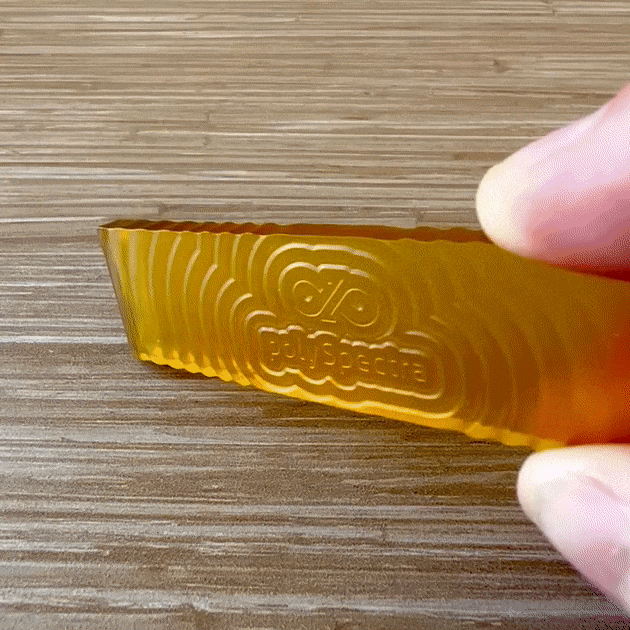Flexural Properties in Photopolymer Resin 3D Printing
Flexural properties are critical in evaluating the performance of materials produced through photopolymer resin 3D printing, stereolithography, and vat photopolymerization. These properties, which include flexural strength and modulus, are indicative of a material’s ability to resist deformation under load. In the context of polymer additive manufacturing, understanding these properties is essential for designing parts that can withstand mechanical stresses during use.
Below is a detailed analysis of selected sources that contribute valuable insights into the flexural properties of materials produced by these methods.
In Vitro Investigation of the Influence of Printing Direction on the Flexural Strength, Flexural Modulus, and Fractographic Analysis of 3D-Printed Temporary Materials
- Citation: A. Keßler, R. Hickel, N. Ilie, Dent. Mater. J. 40(3), 641–649 (2021). DOI: 10.4012/dmj.2020-147
- Relevance: This study directly addresses the impact of printing direction on the flexural properties of 3D-printed materials, which is a critical aspect of part performance in additive manufacturing.
- Reliability: Published in the Dental Materials Journal, this peer-reviewed article provides empirical data and a scientific approach to understanding the material properties.
- Significance: The findings can guide the optimization of printing orientations to enhance the flexural strength and modulus of printed parts, which is crucial for their structural integrity.
Mechanics of Shape Distortion of DLP 3D Printed Structures During UV Post-Curing
- Citation: D. Wu, Z. Zhao, Q. Zhang, H.J. Qi, D. Fang, Soft Matter 15(30), 6151–6159 (2019). DOI: 10.1039/c9sm00725c
- Relevance: This article explores the post-curing process, which significantly affects the final mechanical properties, including flexural properties, of 3D-printed parts.
- Reliability: Published in the journal Soft Matter, the research provides a rigorous analysis of the post-curing mechanics, backed by scientific evidence.
- Significance: Understanding the mechanics of shape distortion during post-curing can lead to improved processes that enhance the flexural performance of printed parts.
Strain Rate Dependent Mechanical Properties of 3D Printed Polymer Materials Using the DLP Technique
- Citation: Y. Wang, X. Li, Y. Chen, C. Zhang, Addit. Manuf. 47, 102368 (2021). DOI: 10.1016/j.addma.2021.102368
- Relevance: This source investigates the strain rate dependency of mechanical properties, which includes flexural properties, in 3D-printed polymers using the DLP technique.
- Reliability: The study is published in the journal Additive Manufacturing, ensuring a peer-reviewed and credible source of information.
- Significance: The strain rate sensitivity of materials is crucial for predicting how a part will behave under different loading conditions, which is essential for applications where flexural properties are critical.
Strategies to Reduce Oxygen Inhibition in Photoinduced Polymerization
- Citation: S.C. Ligon, B. Husár, H. Wutzel, R. Holman, R. Liska, Chem. Rev. 114(1), 577–589 (2014). DOI: 10.1021/cr3005197
- Relevance: Oxygen inhibition can adversely affect the curing process of photopolymers, leading to compromised flexural properties.
- Reliability: Published in Chemical Reviews, this source provides a comprehensive overview of strategies to overcome a common issue in photopolymerization.
- Significance: By reducing oxygen inhibition, the mechanical properties of the final printed parts, including flexural strength and modulus, can be significantly improved.
From Resin Formulation and Process Parameters to the Final Mechanical Properties of 3D Printed Acrylate Materials
- Citation: Springer Link Article
- Relevance: This review article connects resin formulation and printing parameters with the final mechanical properties, providing a holistic view of the factors affecting flexural properties.
- Reliability: The source is an open-access article from a reputable publisher, ensuring the information is accessible and peer-reviewed.
- Significance: The comprehensive analysis of various studies and results offers a valuable resource for understanding how to control the flexural properties of 3D-printed acrylate materials.
Additive Manufacturing (3D Printing) of Photopolymer Resin Materials
- Citation: NCBI Article
- Relevance: This manuscript reviews photopolymerization technologies and their after-cured mechanical properties, including flexural properties.
- Reliability: The source is available through the National Center for Biotechnology Information (NCBI), which is a reliable and authoritative platform.
- Significance: The case studies and applications presented in the manuscript offer practical insights into the real-world implications of flexural properties in additive manufacturing.
A Review on Stereolithography and Its Applications in Biomedical Engineering
- Citation: Springer Link Chapter
- Relevance: This review focuses on stereolithography, a key technique in photopolymer resin 3D printing, and its applications in a field where flexural properties are often critical.
- Reliability: The chapter is part of a published book, which typically undergoes a rigorous editorial process.
- Significance: The applications in biomedical engineering often require precise control over mechanical properties, including flexural strength and modulus, making this source highly relevant.
Influence of Process Parameters on the Properties of Additively Manufactured Fiber-Reinforced Polymer Composite Materials
- Citation: M. Ramesh, L. Rajeshkumar, D. Balaji, J. of Materi Eng and Perform 30, 4792–4807 (2021). DOI: 10.1007/s11665-021-05832-y
- Relevance: This review article discusses the influence of process parameters on the properties of fiber-reinforced polymer composites, which are known for their enhanced flexural properties.
- Reliability: Published in the Journal of Materials Engineering and Performance, the article provides a peer-reviewed analysis of additive manufacturing techniques.
- Significance: Fiber reinforcement is a key strategy for improving flexural properties, and this source offers a comprehensive review of how different parameters affect these properties.
Conclusion
The flexural properties of materials produced by photopolymer resin 3D printing, stereolithography, vat photopolymerization, and polymer additive manufacturing are crucial for the performance and durability of the final parts. The sources provided offer a diverse and in-depth understanding of the factors influencing these properties, from the influence of printing direction and post-curing mechanics to the formulation of the resin and the process parameters. Each source contributes valuable knowledge that can guide researchers and practitioners in optimizing the flexural performance of their printed materials.
